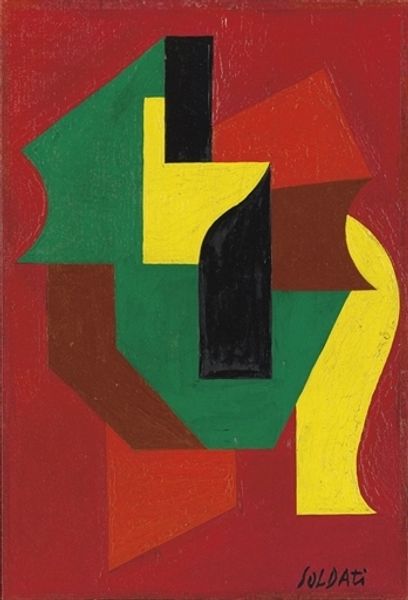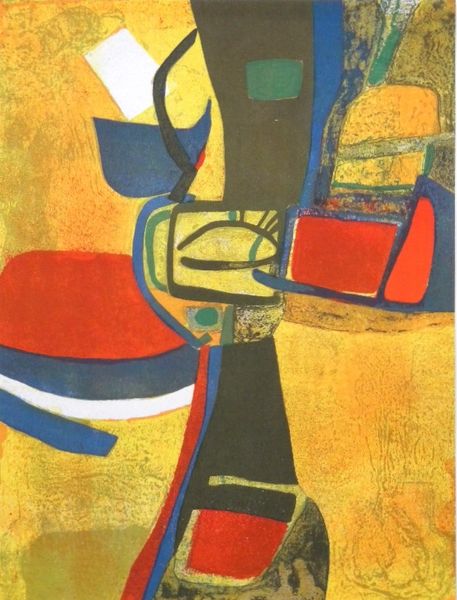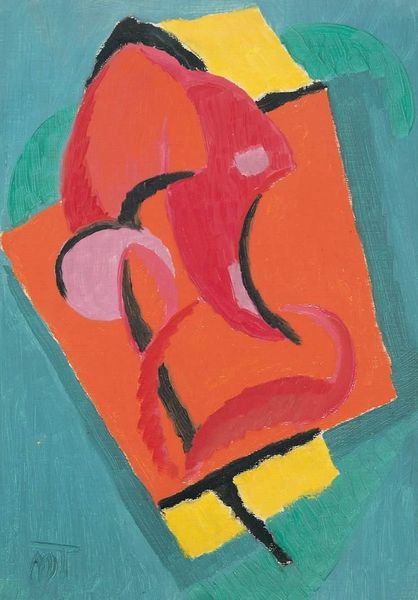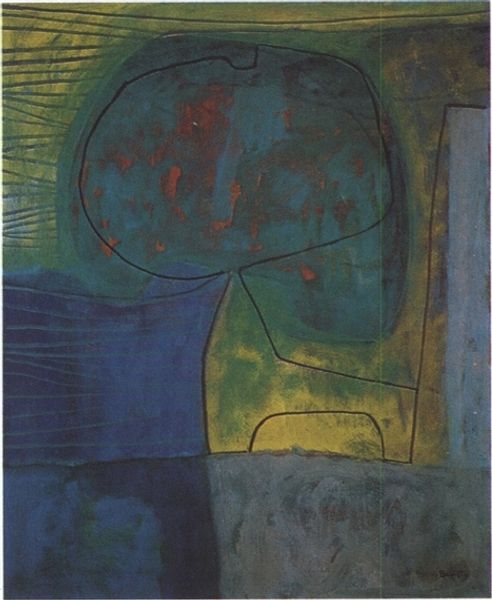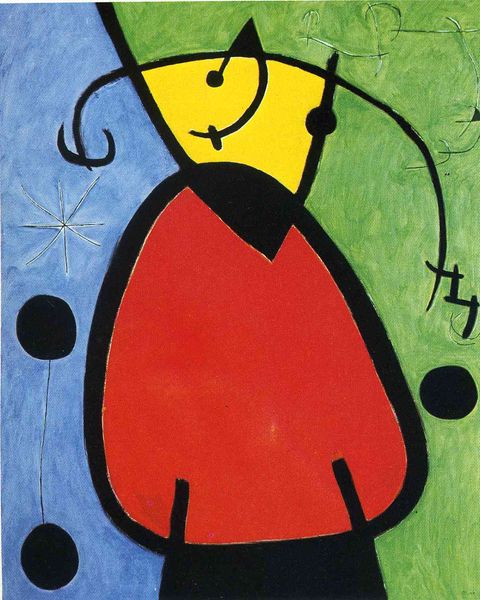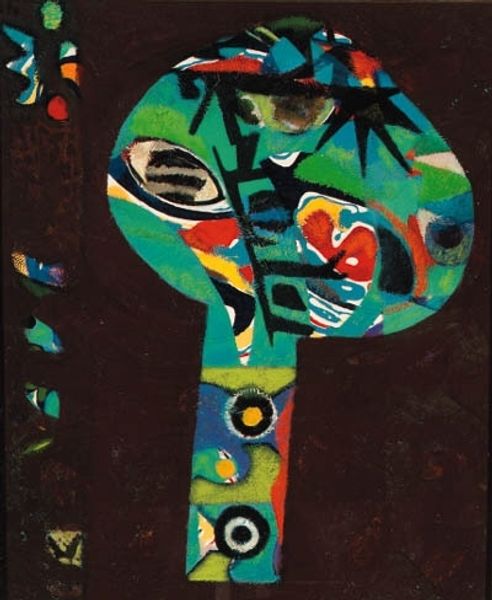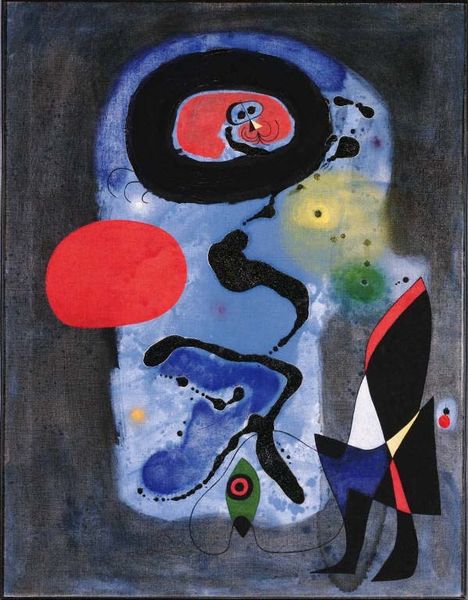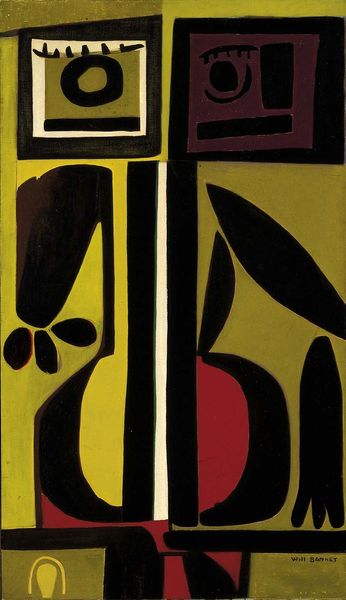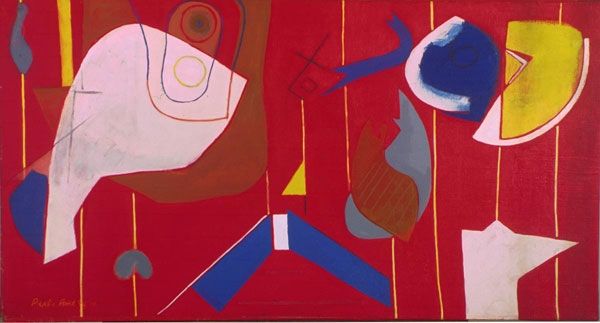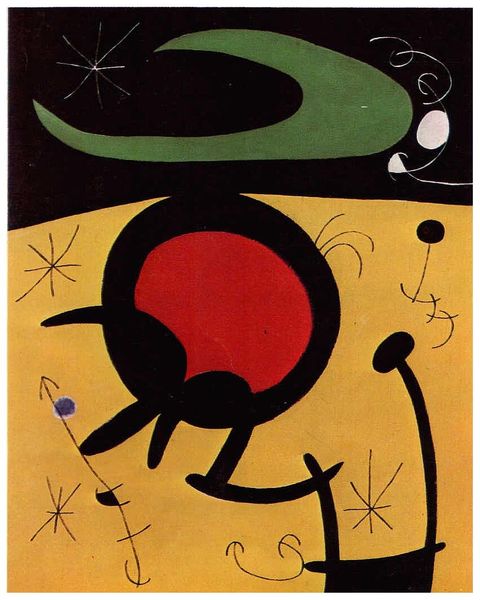
painting, acrylic-paint
#
portrait
#
abstract-expressionism
#
contemporary
#
painting
#
pop art
#
acrylic-paint
#
figuration
#
acrylic on canvas
#
abstraction
#
surrealism
#
portrait art
#
modernism
Copyright: Joan Miro,Fair Use
Curator: Joan Miró's "Catalan Peasant in the Moonlight," painted in 1968. What are your immediate thoughts? Editor: Striking. Bold color blocks, almost cartoonish in their simplicity, yet…somehow menacing? It feels unresolved, perhaps intentionally so. Curator: Well, the context is vital here. 1968 was a year of global unrest. Miró, a Catalan, was deeply affected by the political turmoil in Spain under Franco's dictatorship. This "peasant" isn't a simple pastoral scene. It's a representation of the oppressed working class under an authoritarian regime. The materials themselves – acrylic on canvas – speak to a post-war availability and accessibility, democratizing the means of artistic production. Editor: I see what you're saying. The red could symbolize anger or bloodshed, while the oppressive black…but let's look closer at the shapes. Notice how the crescent moon almost pierces the figure’s head. It could read like enlightenment breaking through or a premonition. And the texture! See the almost frantic brushstrokes in the green background – is that unease, a lack of resolution perhaps? Curator: Indeed! And let’s not ignore the industrial nature of acrylics as they distanced themselves from traditional oil paints. They allow for starker contrasts and flat application which echoes political posters or banners you might find in protests from that time. The figure itself feels assembled from geometric forms which speak volumes about the fractured state of society. Editor: It’s an intriguing intersection between form and the socio-political. The visual language almost conceals the message at first glance. It is the relationships between colour, shape and scale which are powerful tools of its subversive stance. Curator: It also underscores the silent suffering and strength found in everyday people. This isn’t about grand narratives of war, it's a view into lived experience with work as an inherent act of revolution itself. Editor: Thank you. Looking at this work closely makes me reconsider the relationship between abstraction and concrete political reality. Curator: And for me, it always highlights how art, and even what appears to be simplistic or innocent at first glance can belie powerful, embedded messaging about society, its struggles and, the power to persevere.
Comments
No comments
Be the first to comment and join the conversation on the ultimate creative platform.
